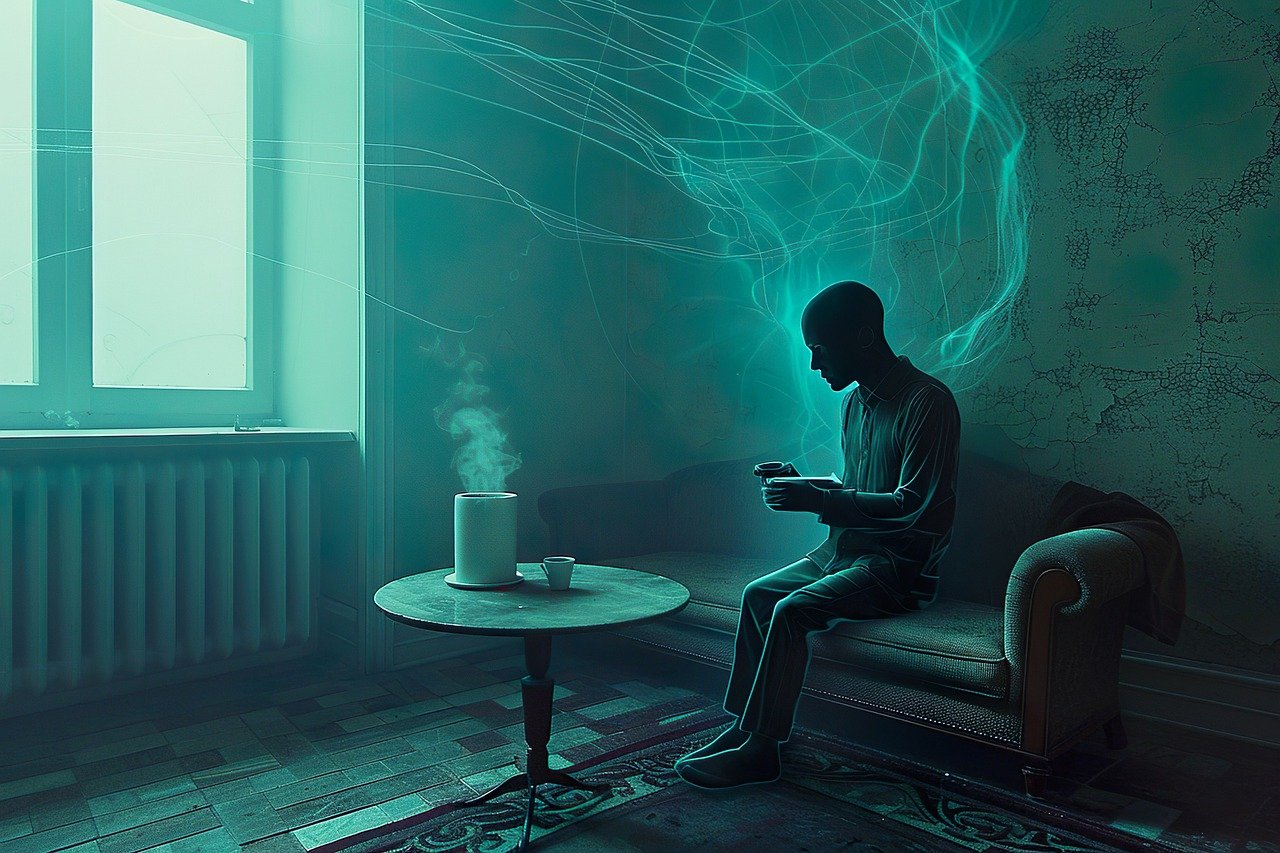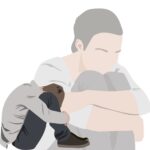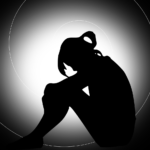Written by Najwa Bashir
Major depression disorder (MDD) is a complicated and common mental illness. According to the sources, in 2008, the WHO ranked MDD as the third most common cause of disease in the world, and they predict that it will be the most common cause of disease by 2030. Mood problems that don’t go away, losing interest in enjoyable activities, feelings of shame or inadequacy, fatigue, trouble focusing, fluctuations in hunger, psychomotor retardation or unrest, sleep problems, or suicidal thoughts are all signs of this disorder.
Empirical evidence reveals that every year, more and more people encounter depression. About 300 million people around the world have MDD, which has become one of the main reasons people can’t work. MDD is more common in some groups, like pregnant women, older adults, kids, and others. This may be because of genetic, psychological, or social factors. Recurrent seizures can happen along with depression. They may happen even when the person is not depressed or may last longer than the condition itself.
Research has also found that a link exists between the growth of social skills and the frequency of MDD. According to a survey, MDD is starting to show up at younger ages because of changes in the economy and more stress in everyday life. Women are about twice as likely as men to have MDD. In particular, women are more likely to show signs of depression when they are dealing with social problems or high levels of stress. Furthermore, it has been found that fall and winter are times when seasonal sadness is more common.
The following article mentions the diagnostic criteria and features of MDD in light of DSM 5 TR.
Diagnostic Criteria
A. At least five of the following symptoms have been present for at least two weeks and are different from how they were before; at least one of these symptoms is either (1) depression or (2) reduced interest or pleasure.
- Feeling down most of the day, almost every day, as shown by their own words (like “feels sad, empty, or hopeless”) or by what other people say (like “appears tearful”) (Note: irritable mood in case of children and adolescents).
- A noticeable loss of interest or pleasure in all or almost all activities for most of the day, almost every day (as shown by an observation or a psychological report).
- Losing or gaining a lot of weight while not dieting (more than 5% of body weight in a month), or having less or more hunger almost every day. (Note: If a kid does not gain weight as expected, this is something to think about).
- Trouble sleeping or too much sleep almost every day.
- Psychomotor restlessness or slowing down almost every day (not just feeling antsy or being slowed down); this must be seen by others.
- Feeling tired or lacking energy almost every day.
- Nearly every day, having feelings of inadequacy or too much or the incorrect kind of guilt (which could be delusions)—not just self-blame or guilt about being sick.
- Making it harder to think or focus, or being unable to make up your mind, almost every day (either from your own story or what other people have seen). 9: Frequent thoughts of death (not just fear of dying), frequent suicidal ideas without a clear plan, or a suicide attempt or a clear plan to kill oneself.
B. The symptoms cause distress or harm in social, occupational, or other important performance areas that are clinically relevant.
C. The episode is not caused by the effects of a drug or another physical situation on the body. Keep in mind that criteria A–C show a major depressed state.
Note: After a big loss, like a death in the family, losing everything you owned, or getting sick or disabled, you may experience intense sadness, ruminating about the loss, insomnia, loss of appetite, and weight loss listed in Criterion A. This can look like a depressive episode. Even though these symptoms may make sense or seem suitable given the loss, it is important to carefully consider the presence of a major depressive episode in addition to the normal reaction to a big loss. It is necessary to use clinical opinion when making this choice, taking into account the person’s past and the community norms for showing sadness during a loss.
D. At least one major depressive episode cannot be explained by schizoaffective disorder and can’t be added to schizophrenia, schizophreniform disorder, delusional disorder, or other specific and unspecific schizophrenia spectrum disorders or other psychotic disorders.
E. No manic or hypomanic attack occurred ever.
Note: This exception does not apply if all of the manic or hypomanic events are caused by drugs or the effects of another medical condition on the body.
Diagnostic Features
- Symptoms of depression must continue at least two weeks and involve feeling low or losing interest in most or all activities virtually every day (Criterion A).
- Four other symptoms must be present within the two-week timeframe. These might include changes in food, weight, sleep, or psychomotor activity; reduced energy; feelings of worthlessness or guilt; difficulties thinking, focusing, or making decisions; or thoughts of death, suicide, a suicide attempt, or a suicide plot.
- The indicators must occur practically daily for at least two weeks, except for suicidal or death thoughts, which must occur several times, and attempted suicide or forming a plan, which only has to occur once.
- The experience must be accompanied by clinically substantial anxiety or impairment in social, professional, or other crucial areas of functioning. For individuals with milder bouts, functioning may seem normal but requires more effort.
- People typically complain of drowsiness or fatigue rather than depression or disinterest. You may miss depression if you do not seek for it.
- Many with this disease feel exhausted and have problems sleeping. Psychomotor issues and delusional or near-delusional shame are rare but worsening.
- Depressed, sad, helpless, disheartened, or “down in the dumps” are common symptoms of severe depression (Criterion A1). During the interview, sadness may be mentioned (e.g., the person looks like they’re crying).
- Some people say they are “blah,” have no sensations, or are frightened, yet their facial expressions and conduct show they are sad.
- Some people talk more about physiological aches and pains than melancholy. People who are more irritable may have persistent anger, a tendency to shout or blame others, or an overdone feeling of annoyance over trivial things.
- Kids and teenagers usually feel restless or irritated, not sad. This should not be confused with feeling furious while disturbed.
- Normal duties are usually less enjoyable. People may declare they’re “not caring anymore” about their activities or no longer appreciate them (Criterion A2).
- Family members notice when someone quits having fun or socializing. A former golfer or sports fanatic youngster may quit playing. Some people lose a lot of sexual drive.
- Changes might affect appetite. Sad individuals claim they must push themselves to eat. Some may eat more and seek sweets or carbohydrates. A person’s appetite may alter a lot, causing them to lose or gain weight or not acquire weight as predicted in youngsters (Criterion A3).
- Sleep disorders include insomnia or oversleeping (Criterion A4). Insomnia sufferers commonly experience middle insomnia (waking up during the night and having problems getting back to sleep) or terminal insomnia. Initial insomnia may occur. Hypersleepers sleep longer at night or more during the day. Some people go to treatment for insomnia.
- People who can’t sit still, pace, wring their hands, or tug or massage their skin, clothes, or other items are agitated. Retardation occurs when their speech, thoughts, and bodily movements slow down; they stop longer before replying; their speech is quiet, varied, or inexpressive; or they are mute (Criterion A5). Psychomotor agitation or delay must be visible to others, not only the person’s thoughts. Psychomotor agitation or delay is often accompanied by the other type. Fatigue and energy loss are common (Criterion A6).
- A person may state they are always fatigued even while not moving. It feels like even minor tasks are laborious. Tasks may take longer or be done poorly. Someone may claim that getting dressed and washing their clothing in the morning is hard and takes twice as long. During acute bouts and partial remission, this symptom causes several serious depressive disorder issues.
- A serious depressive episode can make a person feel worthless or guilty, including having an excessively low self-esteem or focusing on previous misdeeds (Criterion A7). Such people misinterpret neutral or minor circumstances in their everyday lives for personal defects and accept too much responsibility for unpleasant things. Someone who believes they create world poverty may have illusions due to worthlessness or shame. Depression makes people blame themselves for being unwell and unable to satisfy social or professional duties. Unless deluded, this does not fit this requirement.
- Many people struggle with thinking, focusing, and making little decisions (Criterion A8). They may appear distracted or have problems remembering. Mentally demanding tasks often leave people helpless. Kids with unexpected grade drops may not be focused. Older people’s major complaint may be memory issues, which may be misinterpreted for dementia (sometimes termed “pseudodementia”).
- Once the major depressed episode is over, memory issues usually disappear. In elderly persons, a major depressive episode may be the earliest indicator of irreversible dementia. Many individuals think about suicide or try to commit suicide (Criterion A9). They can range from a buried desire to not wake up in the morning to a fleeting thought that others would be better off if the individual were dead to a thorough suicide plot. Seriously suicidal people may have revised their wills, paid off their bills, obtained a rope or pistol, and chosen a location and time to commit suicide.
- People may commit suicide because they want to give up because they cannot move over issues, stop an emotionally painful condition they fear will never end, cannot find joy in life, or don’t want to burden others. Eliminating these ideas may be a better predictor of decreased suicide risk than rejecting any further suicide intentions.
- Even in milder situations, a severe depressive episode must induce clinically substantial sorrow or interfere with social, professional, or other crucial areas of functioning (Criterion B). If the handicap is severe, the person may not work socially or professionally. In the worst case, the individual may be unable to eat, dress, or clean oneself.
- If they have difficulties focusing, forget things, or reject, minimize, or explain away their symptoms, they may not be honest. More information from others can assist determine the path of large depressive episodes and manic or hypomanic episodes.
- Since major depressive episodes develop slowly, clinical facts regarding the worst phase of the current episode may be the greatest indicator.
- Some severe depressive episode symptoms are similar to those of other medical conditions. Diabetes can cause weight loss, cancer can cause fatigue, and pregnancy or postpartum sleepiness can constitute hypersomnia. When obviously and totally caused by another medical condition, these indications do not indicate serious depression.
- Check for non-vegetative indicators of sadness, a loss of enjoyment, guilt or worthlessness, difficulties focusing or making decisions, and suicidal thoughts. Restricting major depressive episodes to these non-vegetative symptoms seems to discover the same persons as the complete criteria.
I am a passionate and knowledgeable psychologist, with a Master of Philosophy (MPhil) in Psychology specializing in Counseling Psychology. Through my writing, I share my insights and thoughts on various psychiatric disorders, conduct analysis on films that touch on psychological issues, and explore other topics related to psychology, while also providing valuable information to psychology enthusiasts, students as well the general community.





